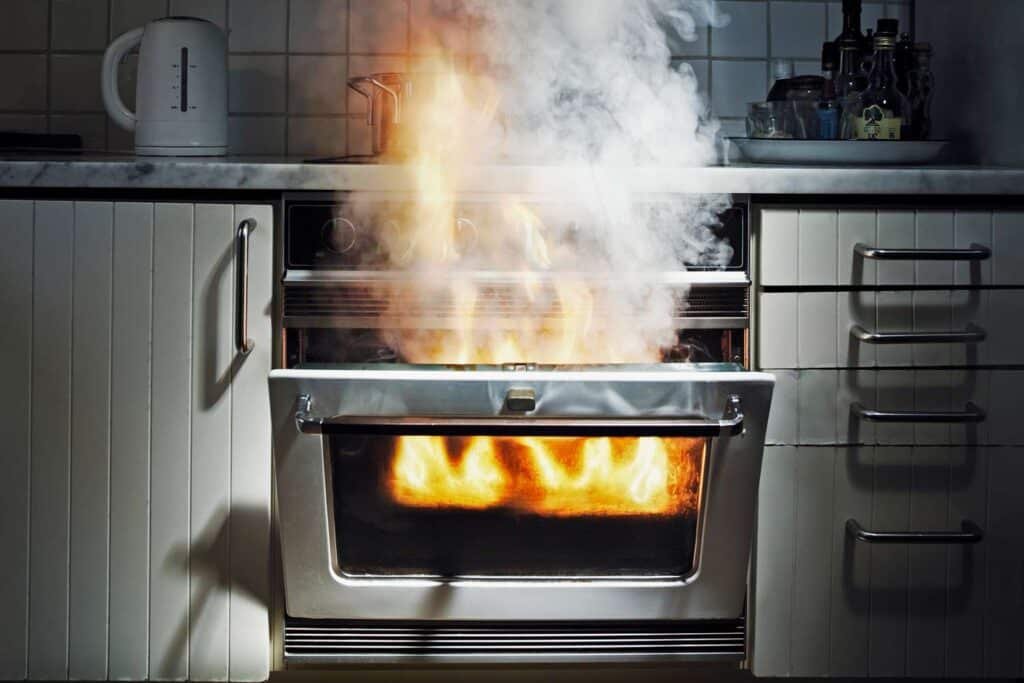Avoid Using the Self-Cleaning Function in Gas and Electric Ovens
Why You Should Avoid Using the Self-Cleaning Function in Gas and Electric Ovens?
If you’re like most people, you probably think the self-cleaning function in your oven is a great feature. After all, who wouldn’t want to avoid the hassle of cleaning their oven by hand? Unfortunately, as professional oven repair technicians, we have seen the disastrous effects of this function on many occasions. In fact, we have even given it a nickname: the self-destruction function. Here’s why.
How It Works
When you activate the self-cleaning function, your oven heats up to a very high temperature (usually around 900 degrees Fahrenheit). This is much hotter than the normal operating temperature of an oven, which is typically between 300 and 500 degrees Fahrenheit. The purpose of this high temperature is to burn off any food residue and grease that may be stuck to the oven’s interior surfaces. Once the cleaning cycle is complete, the oven will shut off automatically and you can wipe away any remaining ash with a damp cloth.
Why It’s a Problem
On the surface, the self-cleaning function seems like a great idea. But in reality, it can cause serious damage to your oven’s electronic components. When the oven heats up to such a high temperature, it puts a tremendous amount of stress on the electronic control board, the temperature sensor, and other sensitive parts. Over time, this can cause these components to fail or malfunction, leading to a host of problems. Some of the most common issues we see include:
- Error codes that prevent the oven from operating
- Faulty temperature readings that cause the oven to overheat
- Inaccurate timer settings that result in burnt or undercooked dishes
- Non-responsive buttons or touchpads that make it difficult to use the oven at all
Although its convenient, below are the reasons why you should avoid using the self-cleaning function:
High Temperatures
Self-cleaning cycles typically use extremely high temperatures to burn off food residue and grease. In gas ovens, temperatures can reach up to 900°F (482°C), while electric ovens can go as high as 1000°F (538°C). These temperatures can pose a fire risk, especially if the oven has any defects or if there are flammable substances nearby.
Potential Damage to the Oven
The extreme heat during the self-cleaning cycle can cause damage to various components of the oven. The intense temperatures may harm the oven’s heating elements, thermostat, door seals, and electronic controls. This can result in malfunctions, increased energy consumption, and expensive repairs.
Fumes and Odors
During the self-cleaning process, food residue and grease are heated to the point of incineration, producing fumes and odors. This can release potentially harmful gases into your home, such as carbon monoxide and other volatile organic compounds (VOCs). It is essential to have proper ventilation when using the self-cleaning function, as inhaling these fumes can be hazardous, especially for individuals with respiratory conditions or sensitivities.

Risk to Pets and Small Children
The high temperatures generated during the self-cleaning cycle can present a danger to pets and small children. The exterior of the oven can become extremely hot, leading to burns if touched accidentally. Additionally, the prolonged duration of the cleaning cycle may cause stress to animals or disrupt the household routine, which can be particularly problematic for pets.
Energy Consumption
Self-cleaning cycles are energy-intensive and can consume a significant amount of electricity or gas. These cycles can last for several hours, resulting in increased energy usage and higher utility bills. If the oven is only lightly soiled, using a shorter and less energy-intensive cleaning method, such as manual cleaning, may be more economical and environmentally frien
What You Should Do Instead
The best way to keep your oven clean is to do it the old-fashioned way: with a damp cloth or sponge and some elbow grease. It may not be as convenient as the self-cleaning function, but it will save you a lot of money and headaches in the long run. If you do need to deep clean your oven, we recommend using a commercial oven cleaner or calling in a professional cleaning service.
Due to our experience in the field we strongly recommend you to avoid using self-cleaning function but If you have already used it and are experiencing problems with your oven, don’t worry.
Our oven repair service is here to help. We specialize in repairing all types of ovens, and we serve the Minneapolis area and nearby cities to the south, including Prior Lake, Savage, Lakeville, Shakopee, Burnsville, Bloomington, Eden Prairie, Minnetonka, Edina, Apple Valley, Eagan, Richfield, Farmington, Golden Valley, Hopkins, Chanhassen, Chaska, New Prague, and Jordan. Contact Us Today to schedule an appointment and get your oven back in working order.
